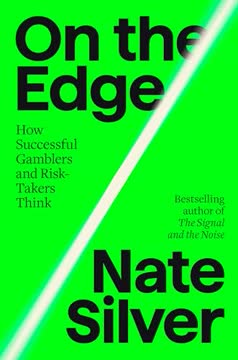मुख्य निष्कर्ष
1. महामारी के पैटर्न: ये यादृच्छिक नहीं हैं, बल्कि ओवरस्टोरीज़ और समूह गतिशीलता से आकारित होते हैं
"महामारियों के नियम होते हैं। उनके सीमाएँ होती हैं। वे ओवरस्टोरीज़ के अधीन होती हैं—और हम ही ओवरस्टोरीज़ का निर्माण करते हैं।"
महामारियाँ अराजक नहीं होतीं। ये तीन प्रमुख कारकों से प्रभावित स्पष्ट पैटर्न का पालन करती हैं:
- ओवरस्टोरीज़: प्रमुख सांस्कृतिक कथाएँ जो व्यवहार और धारणा को आकार देती हैं
- समूह गतिशीलता: समुदायों में लोग कैसे एक-दूसरे के साथ बातचीत करते हैं और एक-दूसरे को प्रभावित करते हैं
- सुपरस्प्रेडर्स: वे व्यक्ति जो फैलाव में असमान रूप से योगदान करते हैं
इन पैटर्न को समझने से हमें महामारियों की भविष्यवाणी, प्रबंधन और संभावित रूप से रोकने की अनुमति मिलती है। यह न केवल रोगों के प्रकोप पर लागू होता है, बल्कि सामाजिक घटनाओं जैसे अपराध की लहरें, फैशन के रुझान, और सांस्कृतिक बदलावों पर भी।
2. छोटे क्षेत्र में भिन्नता: स्थानीय संदर्भ महामारी के फैलाव को गहराई से प्रभावित करता है
"मियामी मियामी बना क्योंकि 1970 के अंत में घटनाओं का एक असाधारण संगम हुआ: क्यूबाई शरणार्थियों का आगमन, कोकीन व्यापार का उदय, और एक नस्लीय दंगा।"
स्थानीय कारक अद्वितीय परिस्थितियाँ बनाते हैं। छोटे क्षेत्र में भिन्नता यह बताती है कि क्यों महामारियाँ पड़ोसी समुदायों में भी अलग-अलग प्रकट हो सकती हैं। प्रमुख प्रभावों में शामिल हैं:
- ऐतिहासिक घटनाएँ
- सांस्कृतिक मानदंड
- आर्थिक परिस्थितियाँ
- राजनीतिक जलवायु
- बुनियादी ढाँचा और संसाधन
मियामी का मामला यह दर्शाता है कि कैसे घटनाओं के एक विशिष्ट संयोजन (क्यूबाई आप्रवासन, नशीली दवाओं का व्यापार, नस्लीय तनाव) ने कुछ प्रकार की महामारियों के लिए प्रवृत्त एक अद्वितीय वातावरण बनाया।
3. ओवरस्टोरीज़ की शक्ति: सांस्कृतिक कथाएँ महामारी की दिशा को आकार देती हैं
"यही है जो कहानीकार कर सकते हैं। वे ओवरस्टोरी को बदल सकते हैं।"
कथाएँ व्यवहार को प्रेरित करती हैं। ओवरस्टोरीज़ वे प्रमुख सांस्कृतिक कथाएँ हैं जो यह निर्धारित करती हैं कि लोग कैसे सोचते और कार्य करते हैं। ये:
- कुछ व्यवहारों को सामान्य बनाती हैं
- वर्जनाएँ बनाती हैं
- जोखिम की धारणा को प्रभावित करती हैं
- सामाजिक मानदंडों को परिभाषित करती हैं
1978 के एनबीसी मिनी-सीरीज़ के बाद अमेरिकी संस्कृति में होलोकॉस्ट के प्रति दृष्टिकोण में बदलाव यह दर्शाता है कि कैसे एक शक्तिशाली कथा तेजी से सामाजिक दृष्टिकोण और व्यवहार को बदल सकती है।
4. सुपरस्प्रेडर्स: एक छोटी अल्पसंख्यक बड़े प्रकोपों को चला सकती है
"वायुजनित वायरस कुछ ही लोगों के कानून के अनुसार काम नहीं करते। वे बहुत, बहुत, बहुत कम लोगों के कानून के अनुसार काम करते हैं।"
अत्यधिक अपवाद महत्वपूर्ण होते हैं। कई महामारियों में, एक छोटी संख्या के व्यक्ति फैलाव के लिए असमान रूप से जिम्मेदार होते हैं। यह लागू होता है:
- रोग प्रकोप (जैसे, COVID-19 सुपरस्प्रेडर्स)
- सामाजिक घटनाएँ (जैसे, फैशन रुझानों में प्रभावशाली लोग)
- आपराधिक गतिविधियाँ (जैसे, उच्च मात्रा में ऑक्सीकोडोन लिखने वाले डॉक्टर)
सुपरस्प्रेडर्स की पहचान और उन पर ध्यान केंद्रित करना महामारियों के प्रबंधन के लिए एक अत्यधिक प्रभावी रणनीति हो सकती है।
5. समूह अनुपात महत्वपूर्ण हैं: जनसांख्यिकी में टIPPING पॉइंट तेजी से बदलाव को प्रेरित कर सकते हैं
"जादुई तीसरा हर प्रकार की जगहों पर प्रकट होता है।"
महत्वपूर्ण संख्या परिवर्तन को उत्प्रेरित करती है। जब एक अल्पसंख्यक समूह जनसंख्या के लगभग 25-33% तक पहुँचता है, तो यह समूह गतिशीलता में तेजी से बदलाव को प्रेरित कर सकता है। यह सिद्धांत लागू होता है:
- कॉर्पोरेट बोर्ड (महिलाओं का प्रतिनिधित्व)
- स्कूल जनसांख्यिकी (शैक्षणिक प्रदर्शन)
- सामाजिक आंदोलन (नए विचारों की स्वीकृति)
इन टIPPING पॉइंट को समझना सामाजिक परिवर्तन की भविष्यवाणी और प्रबंधन में मदद कर सकता है।
6. सामाजिक इंजीनियरिंग: समूह गतिशीलता का जानबूझकर हेरफेर महामारी को प्रभावित करता है
"महामारी को नियंत्रित करने के लिए आवश्यक उपकरण हमारे सामने टेबल पर हैं। हम अनैतिक लोगों को इन्हें लेने दे सकते हैं। या हम इन्हें खुद उठा सकते हैं, और एक बेहतर दुनिया बनाने के लिए उनका उपयोग कर सकते हैं।"
जानबूझकर हस्तक्षेप शक्तिशाली होता है। सामाजिक इंजीनियरिंग में समूह गतिशीलता को जानबूझकर हेरफेर करना शामिल है ताकि विशिष्ट परिणाम प्राप्त किए जा सकें। उदाहरणों में शामिल हैं:
- हार्वर्ड का जनसांख्यिकीय संतुलन बनाए रखने के लिए एथलेटिक्स में प्रवेश का उपयोग
- लॉरेंस ट्रैक का नस्लीय कोटा ताकि सफेद लोगों का पलायन रोका जा सके
- Purdue Pharma का विशेष डॉक्टरों को ऑक्सीकोडोन का लक्षित विपणन
हालांकि सामाजिक इंजीनियरिंग का उपयोग सकारात्मक और नकारात्मक दोनों उद्देश्यों के लिए किया जा सकता है, इन तकनीकों के प्रति जागरूकता नैतिक निर्णय लेने के लिए महत्वपूर्ण है।
7. निष्क्रिय वॉयस का जाल: जिम्मेदारी से इनकार महामारी के चक्रों को बढ़ाता है
"संबंधित रहा है।"
भाषा जिम्मेदारी को प्रकट करती है। निष्क्रिय वॉयस का उपयोग अक्सर जिम्मेदारी को टालने के प्रयास को दर्शाता है। यह विशेष रूप से स्पष्ट होता है:
- संकट के दौरान कॉर्पोरेट संचार में
- विवादास्पद मुद्दों पर राजनीतिक बयानों में
- व्यक्तिगत गलतियों के प्रति व्यक्तियों की प्रतिक्रियाओं में
इस भाषाई बचाव को पहचानना और चुनौती देना महामारी के मूल कारणों को संबोधित करने के लिए महत्वपूर्ण है।
8. मीडिया की भूमिका: टेलीविजन और लोकप्रिय संस्कृति सामाजिक दृष्टिकोण को फिर से आकार दे सकती है
"अगर मैं एक राष्ट्र के गीत लिख सकता हूँ, तो मुझे परवाह नहीं है कि उनके कानून कौन लिखता है।"
लोकप्रिय संस्कृति परिवर्तन को प्रेरित करती है। mass media, विशेष रूप से टेलीविजन, सामाजिक दृष्टिकोण को तेजी से बदलने की शक्ति रखता है। प्रमुख उदाहरणों में शामिल हैं:
- होलोकॉस्ट मिनी-सीरीज़ ने सार्वजनिक जागरूकता को बदल दिया
- Will & Grace ने टीवी पर समलैंगिक पात्रों को सामान्य बनाया
- नारीवादी सिटकॉम ने महिलाओं की भूमिकाओं के प्रति धारणाओं को आकार दिया
मीडिया के प्रभाव को समझना और उसका लाभ उठाना सामाजिक परिवर्तन के लिए एक शक्तिशाली उपकरण हो सकता है।
9. हस्तक्षेप का दोधारी तलवार: अच्छी मंशा वाले कार्य उलट सकते हैं
"अब जो हम जानते हैं, उसके आधार पर, मुझे लगता है कि यह सही निर्णय था। हाँ। आप इसे एक पल में करेंगे।"
अनपेक्षित परिणाम प्रचुर हैं। महामारियों को संबोधित करने के प्रयास कभी-कभी स्थिति को और बिगाड़ सकते हैं। उदाहरणों में शामिल हैं:
- ऑक्सीकोडोन के पुनःफॉर्मुलेशन के कारण हेरोइन के उपयोग में वृद्धि
- बलात्कारी एकीकरण संभावित रूप से सफेद पलायन को तेज कर सकता है
- नशीली दवाओं के खिलाफ अभियान अनजाने में नशीली दवाओं के उपयोग को ग्लैमराइज कर सकते हैं
जटिल सामाजिक प्रणालियों में हस्तक्षेप करते समय संभावित तरंग प्रभावों पर सावधानीपूर्वक विचार करना महत्वपूर्ण है।
10. ओपिओइड संकट का केस स्टडी: ओवरस्टोरीज़, सुपरस्प्रेडर्स, और समूह गतिशीलता का एक आदर्श तूफान
"ऑक्सीकोडोन हमारी चाँद की टिकट है।"
कई कारक एकत्रित हुए। ओपिओइड संकट यह दर्शाता है कि कैसे विभिन्न महामारी के सिद्धांत एक-दूसरे के साथ बातचीत कर सकते हैं:
- ओवरस्टोरी: दर्द प्रबंधन के प्रति बदलती चिकित्सा दृष्टिकोण
- छोटे क्षेत्र में भिन्नता: राज्य के प्रिस्क्रिप्शन निगरानी कार्यक्रमों में भिन्नताएँ
- सुपरस्प्रेडर्स: उच्च मात्रा में प्रिस्क्राइबर जो फार्मास्युटिकल कंपनियों द्वारा लक्षित थे
- समूह गतिशीलता: प्रिस्क्रिप्शन ओपिओइड से हेरोइन और फेंटेनल की ओर बदलाव
यह केस स्टडी वास्तविक दुनिया की महामारियों की जटिलता और उन्हें संबोधित करने के लिए बहुआयामी दृष्टिकोण की आवश्यकता को दर्शाती है।
अंतिम अपडेट:
FAQ
What's Revenge of the Tipping Point about?
- Exploration of Social Epidemics: Malcolm Gladwell examines how ideas, behaviors, and trends spread through society, comparing them to epidemics. He revisits concepts from his earlier work, The Tipping Point, to explore the darker aspects of social change.
- Case Studies and Examples: The book includes case studies like bank robberies in Los Angeles and Medicare fraud in Miami to show how certain individuals or groups can act as "superspreaders" of behavior and ideas.
- Social Engineering: Gladwell discusses how social engineering can manipulate these tipping points, raising ethical questions about the responsibility of individuals and communities in shaping social outcomes.
Why should I read Revenge of the Tipping Point?
- Insightful Analysis: Gladwell offers a fresh perspective on social dynamics, making complex ideas accessible and engaging through storytelling and real-world examples.
- Relevance to Current Issues: The themes are pertinent to contemporary challenges, such as public health crises and social justice movements, helping readers navigate and influence their environments.
- Thought-Provoking Questions: The book encourages reflection on personal roles in social epidemics and the impact of actions, prompting deeper consideration of responsibility.
What are the key takeaways of Revenge of the Tipping Point?
- Tipping Points Matter: Small changes can lead to significant social shifts, but the context and individuals involved are crucial. Understanding these dynamics can empower change.
- Role of Superspreaders: Certain individuals or groups can amplify behaviors and ideas, acting as "superspreaders." Identifying these key players can help promote positive change or mitigate negative trends.
- Ethical Implications: The book raises questions about the morality of manipulating social dynamics for desired outcomes, challenging readers to consider the consequences on community well-being.
What are the best quotes from Revenge of the Tipping Point and what do they mean?
- Duality of Tools: “The very same tools we use to build a better world can also be used against us.” This highlights the dual nature of social engineering, suggesting strategies can lead to both positive and harmful outcomes.
- Call for Accountability: “It’s time for a hard conversation about epidemics.” Gladwell emphasizes the need for honest discussions about individual roles in social epidemics.
- Vulnerability of Monocultures: “Epidemics love monocultures.” This underscores the susceptibility of homogeneous communities to social contagions, suggesting diversity as a protective factor.
How does Malcolm Gladwell define "tipping point" in Revenge of the Tipping Point?
- Threshold of Change: A tipping point is the moment when a small change leads to a significant and often irreversible shift in behavior or belief within a community.
- Influencing Factors: Various factors contribute to reaching a tipping point, including the context, characteristics of individuals involved, and the nature of ideas being spread.
- Real-World Applications: The concept can be applied to fields like public health and marketing, helping understand how to effectively promote change.
What is the concept of "superspreaders" in Revenge of the Tipping Point?
- Definition: Superspreaders are individuals or groups that significantly amplify the spread of ideas, behaviors, or trends within a community.
- Examples: Gladwell discusses examples like bank robbers in Los Angeles and the Medicare fraud epidemic in Miami to illustrate their influence.
- Societal Implications: Identifying superspreaders can help communities harness their influence for positive change or mitigate their impact on negative trends.
What role does context play in social epidemics according to Revenge of the Tipping Point?
- Power of Context: The environment and circumstances surrounding an event significantly influence how behaviors and ideas spread.
- Examples of Influence: Specific social and economic conditions, like those in Los Angeles during the bank robbery epidemic, create fertile grounds for certain behaviors.
- Implications for Change: Understanding context allows for tailored strategies to promote positive change, ensuring interventions are effective and appropriate.
How does Revenge of the Tipping Point relate to current social issues?
- Public Health Crises: The book draws parallels between social epidemics and public health issues, such as the COVID-19 pandemic, highlighting rapid behavior spread in interconnected communities.
- Social Justice Movements: Exploration of tipping points and superspreaders applies to understanding social movements, where certain individuals or events catalyze widespread change.
- Community Responsibility: Encourages reflection on roles in shaping social outcomes, emphasizing collective action and accountability in addressing challenges.
What is the significance of the "Magic Third" in Revenge of the Tipping Point?
- Definition: The Magic Third is the critical threshold at which a minority group within a larger population can influence the dynamics of that group.
- Applications: It applies to corporate boards, educational settings, and community dynamics, illustrating its relevance across different fields.
- Diversity and Inclusion: Recognizing the Magic Third's importance can help create inclusive environments, fostering diversity and enhancing group dynamics.
How does Malcolm Gladwell address the ethical implications of social engineering in Revenge of the Tipping Point?
- Moral Responsibility: Raises questions about ethical responsibilities when manipulating social dynamics for desired outcomes, emphasizing accountability.
- Potential for Harm: While promoting positive change, social engineering can lead to negative consequences if not approached thoughtfully.
- Call for Conversations: Advocates for open discussions about social engineering implications, urging communities to engage in critical conversations about their roles.
What is the concept of "overstory" in Revenge of the Tipping Point?
- Definition: An overstory is the overarching narrative or context that influences individual and collective behaviors.
- Impact on Epidemics: Understanding the overstory is essential for addressing epidemics effectively, helping identify root causes of behaviors.
- Examples: The book provides examples like the Holocaust and opioid crisis, showing how narratives dictate societal responses and can exacerbate or mitigate crises.
How does Revenge of the Tipping Point relate to the opioid crisis?
- Purdue Pharma Case Study: Examines how marketing strategies contributed to the opioid epidemic, focusing on superspreaders like doctors who prescribed excessively.
- Role of Overstories: Discusses how the narrative around pain management shifted, leading to increased opioid prescriptions and normalization of high-dose use.
- Group Proportions: Highlights how user demographics shifted after OxyContin reformulation, leading to a surge in heroin and fentanyl use, demonstrating epidemic dynamics' fluidity.
समीक्षाएं
टिपिंग पॉइंट का प्रतिशोध को मिश्रित समीक्षाएँ मिली हैं, जिनमें रेटिंग 1 से 5 सितारों के बीच है। कई लोग ग्लैडवेल की कहानी कहने की कला और जटिल विषयों को सरल बनाने की क्षमता की प्रशंसा करते हैं, जबकि अन्य इस पुस्तक की आलोचना करते हैं कि यह पुराने विचारों को दोहराती है और एकता की कमी है। सकारात्मक समीक्षाएँ आकर्षक कथानकों और विचारोत्तेजक अवधारणाओं को उजागर करती हैं, जैसे "जादुई तीसरा" और "ओवरस्टोरीज़।" आलोचकों का तर्क है कि कुछ उदाहरण मजबूर या मुख्य विषयों से असंबंधित लगते हैं। ऑडियोबुक संस्करण को इसके पॉडकास्ट जैसे प्रारूप और अतिरिक्त ऑडियो तत्वों के लिए विशेष प्रशंसा मिलती है।
Similar Books























